Hip Injuries
Patients presenting with injuries involving the hip commonly complain of:
- Sharp pain
- Dull pain
- Pinching
- Catching
- Throbbing
- Movement restriction (particularly internal rotation and flexion)
Depending on the specific diagnosis, the onset of hip pain may be acute, chronic, or insidious. Hip injuries can present in patients of all ages, occupations, and fitness levels.
Upon examination, patients may have a noticeable change in their gait (shortened, waddling) or they may be unable to ambulate. Pain may be unilateral or bilateral. Pain may radiate into the groin, knee, or back. Pain may be relieved with the hip in optimal articular contact, for example in the supine position with the leg in partial flexion, partial abduction, and partial external rotation.
Common neuromusculoskeletal diagnosis of hip pain include:
- Labral tears
- Femoral acetabular impingement
- Femoral acetabular osteoarthritis pain
- Piriformis syndrome
- Lateral femoral cutaneous nerve irritation
- Bursitis (ischiogluteal, trochanteric, gluteus medius, iliopsoas)
- Overlying muscle tissue strains (psoas major, iliacus, adductor magnus, adductor brevis, adductor longus, gracilis)
Being a ball and socket joint like the shoulder, injuries of the hip can be difficult to manage. A conservative approach to treatable neuromusculoskeletal injuries of the hip should focus on improving joint mobility with the assistance of active & passive tractional mobilisation, and diagnosis specific rehabilitation.
- Date May 6, 2019
- Tags Bursitis, Chiropractic, Chiropractor, Desk postures, Femoral head, Hip flexor, Hip pain, Lower back pain, Lumbar, Osteoarthritis, Pelvis, Pubis, Sacroiliac joints, Sacrum, Spinal, Spine, Stiffness, Stretching, Tension, Treatment

